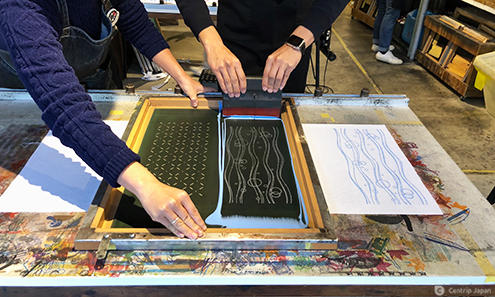What are Vintage Posters?
- Early form of mass communication (dating back to the 1840s)
- Art designed with a purpose
- Created to attract attention and action / re-action
- Capture the essence of a particular era
- Important records of cultural and human history
- Historically, posters were the most effective way to mass communicate prior to radio, TV and TWITTER, INSTAGRAM and FACEBOOK!
Printing Techniques
Silkscreen Printing is the oldest form of printing dating back a thousand years. A printing technique where a mesh is used to transfer ink onto a substrate, except in areas made impermeable to the ink by a blocking stencil.
A blade or squeegee is moved across the screen to fill the open mesh apertures with ink, and a reverse stroke then causes the screen to touch the substrate momentarily along a line of contact. This causes the ink to wet the substrate and be pulled out of the mesh apertures as the screen springs back after the blade has passed. One colour is printed at a time, so several screens can be used to produce a multi-coloured image or design.

Lithography, derives from the Ancient Greek λίθος, lithos, meaning 'stone', and γράφειν, graphein, meaning 'to write.' This method of printing originally based on the immiscibility of oil and water.
This form of printing is from a stone (lithographic limestone) or a metal plate with a smooth surface, and invented in 1796 by German author and actor Alois Senefelder as a cheap method of publishing theatrical works. Lithography can be used to print text or artwork onto paper or other suitable material.

Offset printing is a commonly used printing technique, in which the inked image is transferred (or "offset") from a plate to a rubber blanket, then to the printing surface.
Development of the offset press came in two versions: in 1875 by Robert Barclay of England for printing on tin, and in 1904 by Ira Washington Rubel of the United States for printing on paper.
